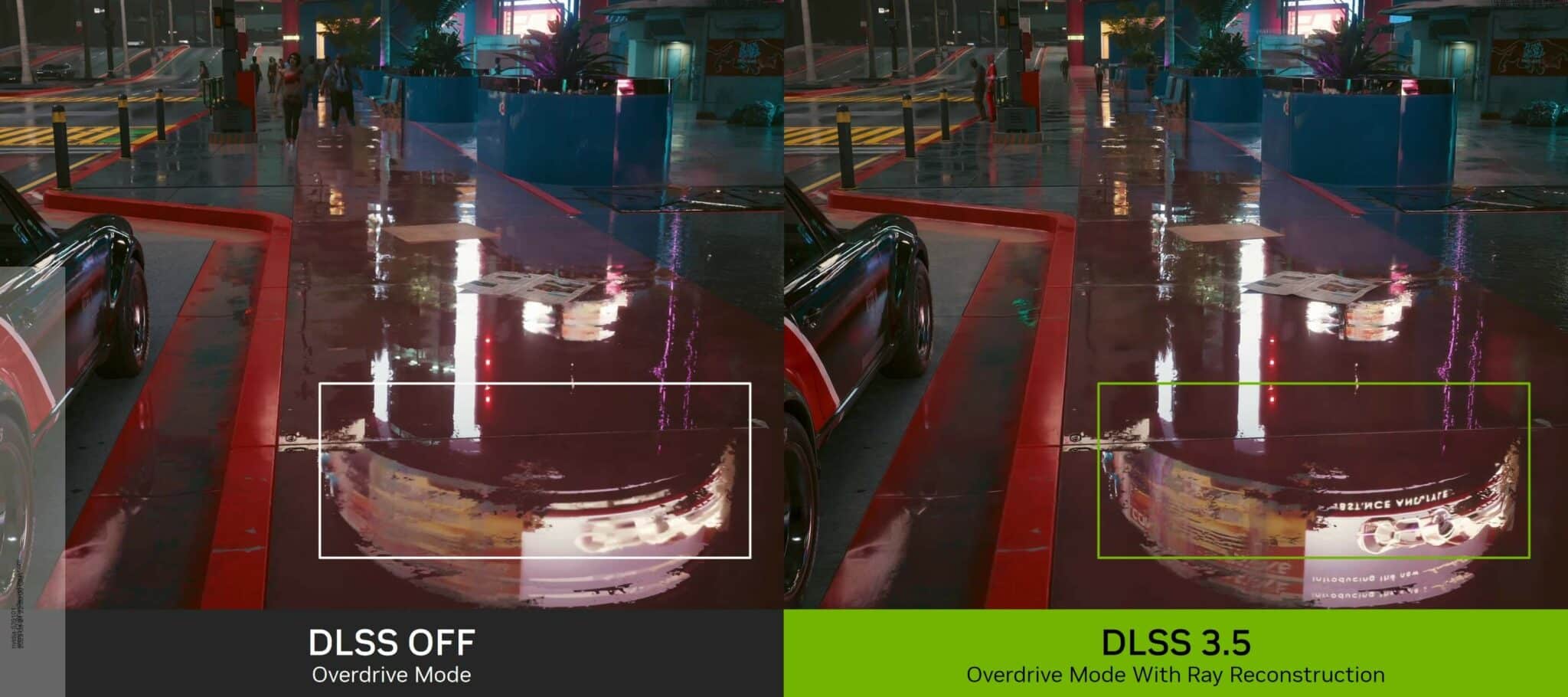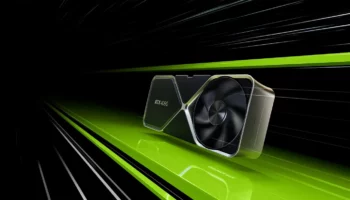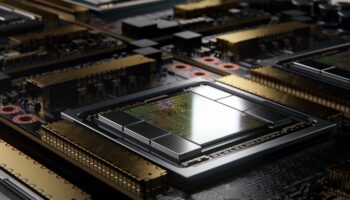NVIDIA has released details on DLSS 3.5, a mid-season quality upgrade to the highly successful upscaler. DLSS 3.5 brings Ray Reconstruction to all GeForce RTX graphics cards, allowing for more accurate upscaling of real-time lighting. Before we move on, here’s a primer on where ray reconstruction fits within the ray-tracing pipeline.
Despite introducing powerful GPUs and fixed-function accelerators, ray tracing remains highly demanding on modern hardware. To tackle this, a hybrid form has been adopted that handles only lighting effects such as shadows, global illumination, and reflections, leaving the rest to the rasterization pipeline. Even with this nerfed setup, the number of rays cast in a frame tends to be quite low, usually one to two per pixel or even less.
With so few rays, you get a noisy frame with artifacts and a fuzzy picture overall. Traditionally, developers have used denoisers based on temporal accumulation (read temporal upscaling) to overcome this noise, but as with all interpolations, it is essentially an approximation. Ergo, you get ghosting, loss of detail, and a smudgy output in complex scenes.
Ray Reconstruction in DLSS 3.5 has been trained (on 5x more data than DLSS 3) to recognize various ray-traced effects, including shadows, reflections, and ambient lighting. This results in a clearer and more detailed image that doesn’t include many bad pixels or artifacts.
The DLSS 3.5 flowchart doesn’t differ much from baseline 3.0. In addition to the low-resolution inputs and motion vectors, the high-frequency sampled rays must be fed to the neural network. This produces an output that considers bad pixels, potential ghosting, and various ray-tracing effects. In the below comparisons, you can see how Ray Reconstructions improves the lighting in the scene.
In the below scene from Cyberpunk 2077, you can see that without DLSS, the light from the vehicle headlight leaks to the sides. This results from bad frame data from previous frames where the vehicle wasn’t as far along. Enabling DLSS 3.5 removes these pixels, producing a more accurate result.
Below, DLSS 3.5 produces clearer reflections by aiding in the reconstruction of the ray-traced content.
Best of all, DLSS 3.5 is more efficient than DLSS 3, producing a cleaner image while improving performance. Below, the pinkish hue is retained by Ray Regeneration which was otherwise lost when using hand-tuned denoisers.
Ray Regeneration will be available on all RTX GPUs alongside DLSS 2, while DLSS 3 remains an Ada-exclusive feature. Cyberpunk 2077: Phantom Liberty will be the first title to leverage DLSS 3.5 later this year.





